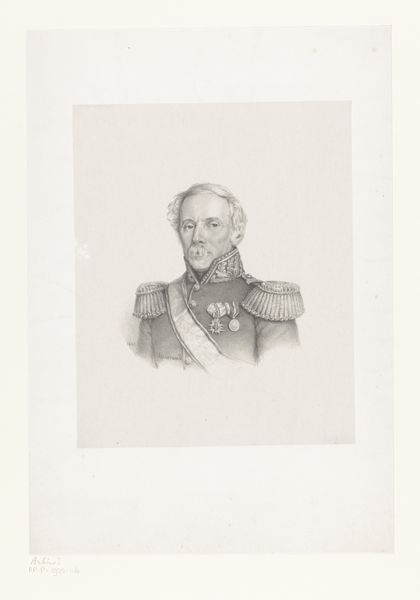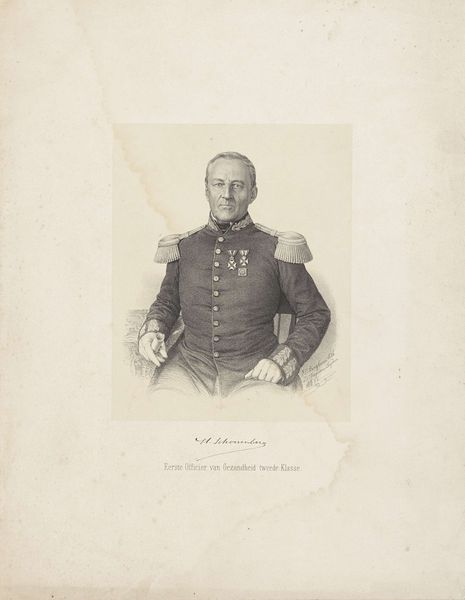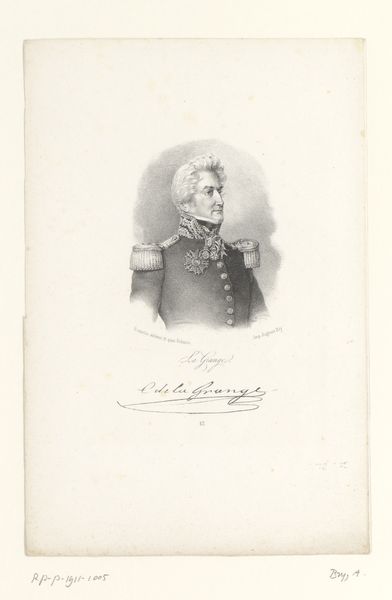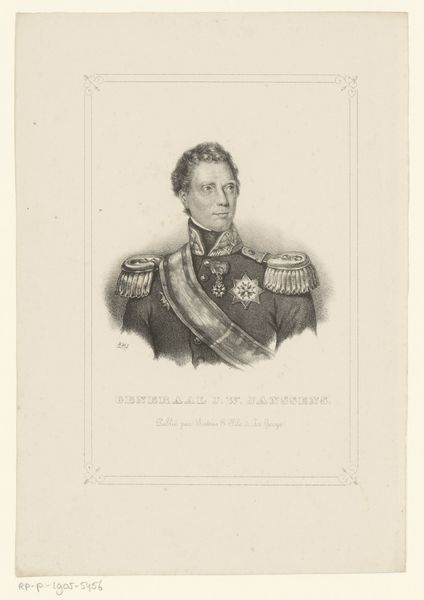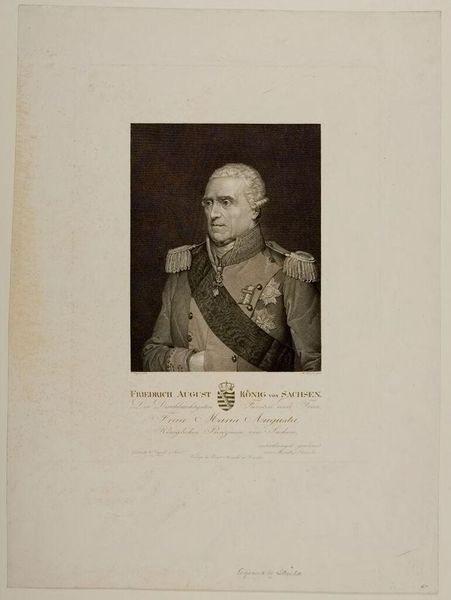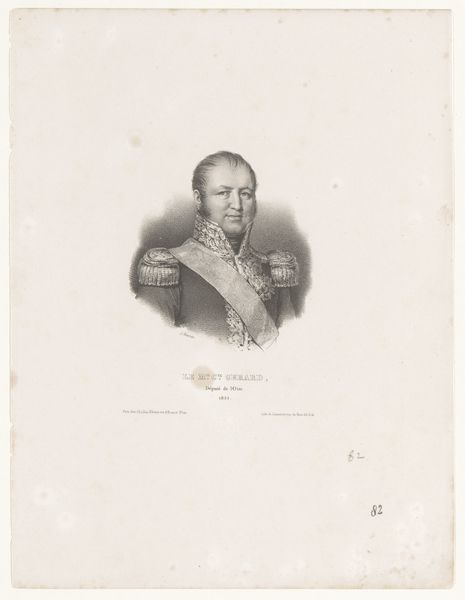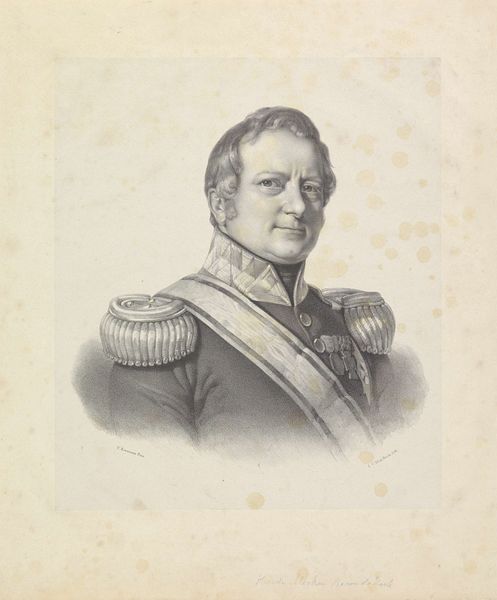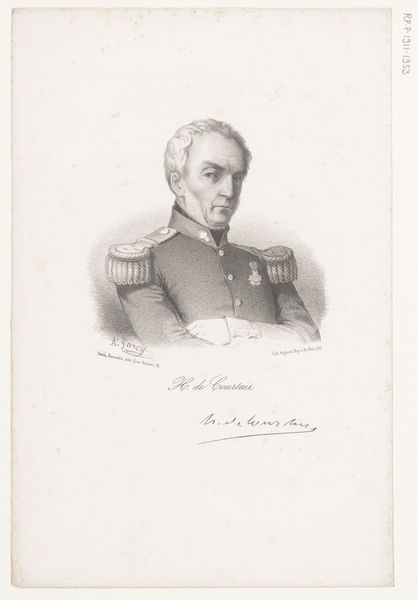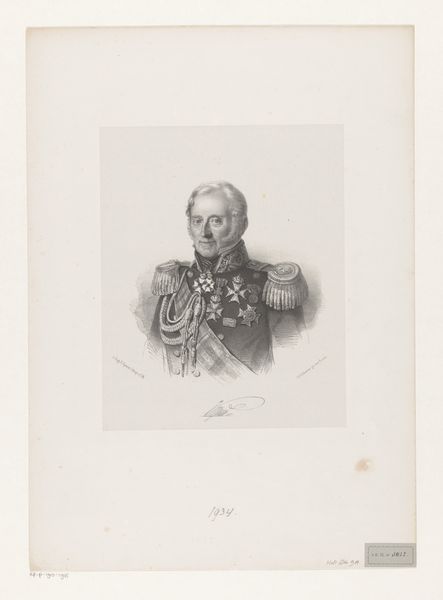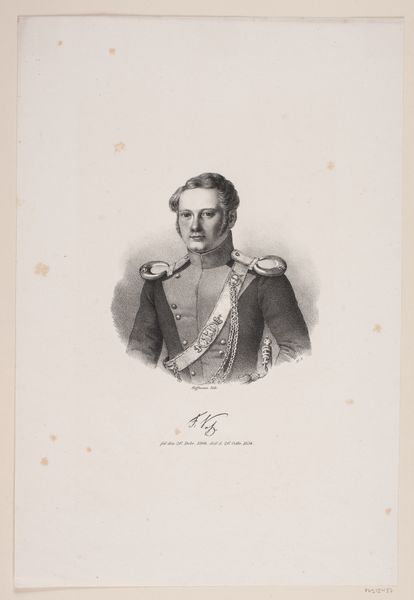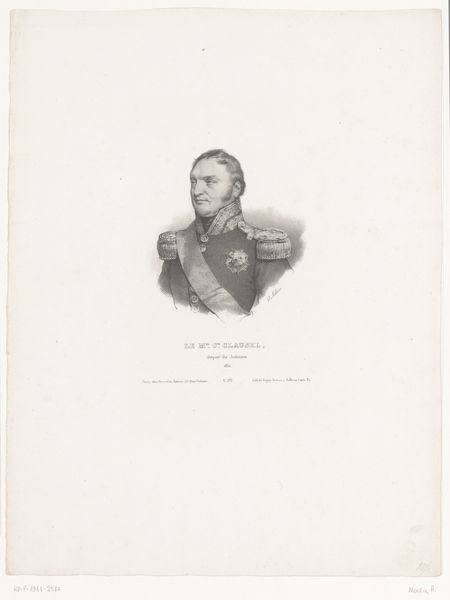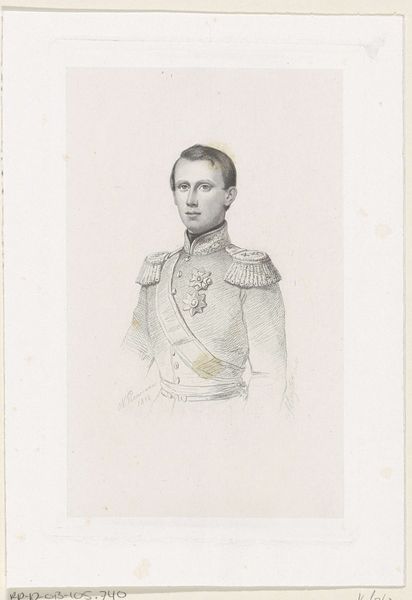
#
pencil drawn
#
light pencil work
#
pencil sketch
#
old engraving style
#
caricature
#
personal sketchbook
#
pencil drawing
#
old-timey
#
portrait drawing
#
pencil work
Dimensions: height 440 mm, width 340 mm
Copyright: Rijks Museum: Open Domain
Curator: There’s something quite stern about this drawing, isn't there? The subject emanates a certain unyielding quality, doesn't he? Editor: He certainly does. We're looking at a portrait, presumed to be from 1864, entitled "Portret van de heer Verschoor" or "Portrait of Mr. Verschoor", attributed to Johann Peter Berghaus, now in the collection of the Rijksmuseum. It's rendered in delicate pencil work, a very fine, detailed style. Curator: Yes, a tight rendering indeed, and so proper. Everything is so clearly delineated; it reminds me of the kind of authority figures etched in our collective memory through textbooks. Editor: It makes one wonder about the social climate of the era that this imagery would be expected and flattering, if not ennobling. Mr. Verschoor clearly wanted to be represented as someone with rank. We see medals displayed prominently. He has quite a serious countenance and that glint in his eye—rather commanding. Curator: I see a carefully constructed performance of power. Observe how he holds that saber, almost casually, yet it speaks volumes. He becomes a symbol, really, doesn't he, embodying notions of duty, of service, perhaps even sacrifice, at least symbolically. It invites us to consider how authority figures shape their public images, and perhaps their own self-image, through objects. Editor: Exactly. And it’s not merely personal; consider the societal impact of these commissioned portraits. They served to solidify social hierarchies. Art validated existing structures of power. Someone like Mr. Verschoor knew exactly the message such a portrait would convey within his community and beyond. It would carry an expectation, too. Curator: Do you get the sense, though, that beyond the social theater, the artist might have perceived something more, perhaps an underlying vulnerability or complexity, even if subtly? Is there a depth behind the meticulously rendered surfaces? Editor: Possibly. Perhaps in the slight asymmetry around his eyes? But I suspect the emphasis, both artistically and for the subject, would be that image of stalwart authority to reinforce the status quo. Still, that tiny, almost imperceptible deviation reminds us that within every constructed symbol lives the possibility of individual expression. Curator: Precisely. Which prompts consideration: even in representations seemingly straightforward and prescriptive, space for nuance and negotiation always manages to emerge. It is where history becomes wonderfully human, perhaps? Editor: Indeed, making it a visual prompt, I think, to continually reassess and interrogate the symbols around us.
Comments
No comments
Be the first to comment and join the conversation on the ultimate creative platform.
